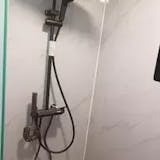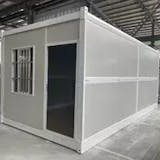Container homes offer a flexible and sustainable housing solution, but to maximize their investment potential, it's essential to convert them from personal property (chattel) to real estate (real property). This legal classification can make a significant difference in financing options, property value, and resale potential. In this article, we'll explore how to legally convert a container home into real estate by attaching it permanently to the land.
Why Convert a Container Home to Real Estate?
1. Financing Options
When a container home is classified as real property, it becomes eligible for conventional mortgage financing. This opens up more financing options, often with better terms compared to personal property loans.
2. Increased Property Value
Real estate is generally valued higher than personal property. Converting your container home into real property can significantly increase its market value and make it more attractive to potential buyers.
3. Tax Benefits
Real property is typically subject to property taxes, which can be beneficial in terms of deductions and overall financial planning. Personal property, on the other hand, may incur higher personal property taxes.
Steps to Attach a Container Home to Land
1. Land Ownership
The first requirement is to own the land where the container home will be placed. If the land is leased, the home may not qualify as real estate. Ownership ensures that the home and land can be classified together as real property.
2. Permanent Foundation
To be considered real property, the container home must be attached to a permanent foundation. This can include a concrete slab, cement blocks, or steel beams. The foundation must meet local building codes and be designed to support the weight and structure of the container home (The Mortgage Reports) (Mobile Home Living).
3. Removal of Transport Features
Any transport features, such as wheels, axles, and towing hitches, must be removed. These elements indicate that the home is mobile, which is a key characteristic of personal property. Removing them reinforces the permanence of the structure (Fannie Mae Selling Guide). Your container home from My Tiny Home Hub does not include any transport features.
4. Utility Connections
The container home must be connected to standard residential utilities such as water, sewer, electricity, and gas. These connections must be permanent and meet all local regulations and building codes (The Mortgage Reports).
5. Affidavit of Affixture
In many states, you will need to file an Affidavit of Affixture with the local county recorder's office. This legal document declares the intent to permanently affix the home to the land, making it part of the real estate. It usually requires the homeowner’s and any lienholder's consent (Mobile Home Living) (Fannie Mae Selling Guide).
6. Title Conversion
Convert the title of the container home from personal property to real property. This often involves canceling the original title (similar to a vehicle title) and recording the home as part of the real estate in the county property records. This step may require legal assistance to ensure all documents are correctly filed and recorded (The Mortgage Reports) (Fannie Mae Selling Guide).
State-Specific Requirements
Each state has its own specific requirements for converting a container home to real property. Here are a few examples:
- Michigan: Requires removal of wheels and axles, attachment to a permanent foundation, and an application for title cancellation (Mobile Home Living).
- Mississippi: Requires wheels and axles removal, proper anchoring, and recording a certificate of classification as real property (Mobile Home Living).
- Nevada: Needs an affidavit of conversion, payment of personal property tax, and attachment to land (Fannie Mae Selling Guide).
It's essential to check with local authorities to understand the specific requirements in your state.
Conclusion
Converting a container home into real estate involves several crucial steps, from securing land ownership to attaching the home to a permanent foundation and completing the necessary legal filings. This conversion can unlock numerous benefits, including better financing options, increased property value, and potential tax advantages. By following these steps, you can ensure that your container home is recognized as a permanent fixture, enhancing its long-term value and investment potential.
Shop My Tiny Home Hub
Ready to convert your container home into real estate? Visit My Tiny Home Hub to explore our customizable container homes and get expert guidance on the conversion process. Shop now and maximize your investment potential!
FAQs
| Question | Answer |
|---|---|
| What is the difference between personal property and real property? | Personal property is movable and not attached to land, while real property is permanently attached to land and includes the land itself. |
| Why should I convert my container home to real property? | Converting to real property offers benefits such as better financing options, increased property value, and potential tax advantages. |
| What is an Affidavit of Affixture? | An Affidavit of Affixture is a legal document declaring the intent to permanently attach a manufactured or container home to land, making it part of the real estate. |
| What foundation types are acceptable for converting a container home to real property? | Acceptable foundations include concrete slabs, cement blocks, and steel beams, all of which must meet local building codes. |
| How can I find state-specific requirements for converting my container home? | Check with local county recorder’s offices or state housing authorities for specific requirements and regulations in your area. |








